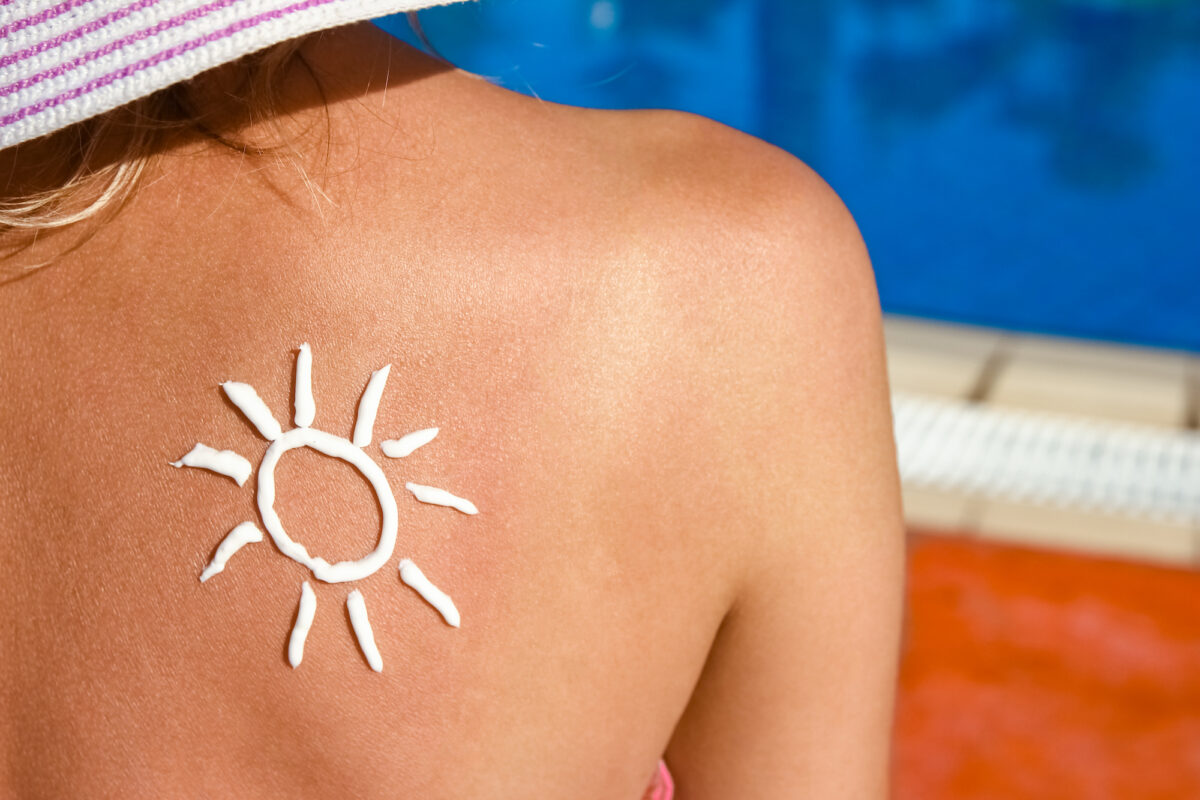
Inside this Article: What is considered safe sun exposure? What are the benefits of the sun and light exposure and why does our body need it for health? Safe & non-toxic sunscreen options and other ways to protect your skin.
This post may contain affiliate links. You can see my disclosure policy here.
In my practice, I get a lot of questions leading up to and during the Summer months about when to use sunscreen, what types, how often it really needs to be utilized and other skin protective measures.
Many parents worry about what we put on and, in our children, myself included. Here is what I teach so you can make informed choices this Summer about the benefits of the sun, what is considered safe sun exposure and non-t0xic sunscreen options you don’t have to feel guilty about.
What is Safe Sun Exposure?
Kids above 6 months of age ideally are getting at least 30 minutes of direct sunlight on bare skin daily – without sunscreen, meaning there is no barrier between the sun and skin. Anything after this, we should be thinking about applying a safe and non-toxic sunscreen or applying a barrier for extended direct sun exposure.
I will watch my kids to see if their skin is getting pink in the sun to determine if they need something sooner, or even a little later. This also depends on the time of day and how direct the sun exposure is.
Regular sun exposure in small doses is healthy for both the skin, bones and the body. The sun is NOT something to be fearful of.
The Benefits of Sun and Why the Body Needs Daily Sun Without Any Barriers
Some sun facts:
- Our body’s natural form of Vitamin D is created through exposure to light from the sun.
- Vitamin D is supportive of the body’s organs, glands and tissues, immune system and disease prevention.
- Our bodies require calcium for strong bones but we can’t absorb it properly without Vitamin D. Vitamin D helps our body take in more calcium and we get this through – ding, ding, ding – sunlight.
- The circadian rhythm – our body’s natural wake/sleep cycle – is regulated by light exposure through the eyes.
- Sunlight has been shown to effectively help lower blood pressure.
However, like many healthy things, sun exposure also comes with limits of “healthiness.”
During peak hours mid-day and early afternoon, you should avoid direct sun exposure or utilize sun shirts, cover-ups and seek shade.
Should You Wear Sunglasses in the Summer?
I don’t recommend sunglasses for children (or adults) if you can avoid it. That’s because the eyes take in light (even if it’s a cloudy day) and naturally produce melatonin and regulate the body’s circadian rhythm (your sleep cycle) through light input of the eyes.
If you choose sunglasses, especially if there is long-term sun exposure or sun reflecting off water like at a lake or the ocean, choose polarized UV protective sunglasses.
Safe & Non-Toxic Sunscreen Options
Using SPF blocking clothing, long sleeves, staying in the shade and regularly applying natural sunscreen – every 2-3 hours – is the best way to protect your family from the sun’s powerful rays.
I generally utilize all the methods listed above BEFORE we put on sunscreen.
Next time you’re browsing the sunscreen aisle, be sure to check the ingredient list. Here’s what you should avoid:
- Oxybenzone
- Octinoxate
- Homosalate
- Octisalate
- Octocrylene
- Avobenzone
Unfortunately, these ingredients are toxic and not only bad for your skin, but bad for the environment and have been banned in certain tropical destinations. When applied to the skin, they’re absorbed into the body and can cause damage (possibly even contributing to skin cancers when the sun interacts with them!)
Think about it… if a chemical can destroy coral reefs, what’s it doing to your body?
Little known fact: What you put onto your skin can absorb into the bloodstream in less than 30 seconds. Making sure you aren’t unknowingly putting chemicals into your body is really important.
Look for these safe, natural ingredients instead:
- Non-nano zinc oxide
- Titanium dioxide
My favorite sunscreens are:
- Think Baby / Think Sport Sunscreen (mineral, it’s a white cream application)
- Aveeno Sensitive Spray Sunscreen (goes on clear and dries quickly)
- Kiss my Face Mineral Spray (it’s white but rubs in well)
- Babyganics Mineral Spray (it’s also white, but rubs in well and super gentle & works!)
These sunscreens all have low scores on the Think Dirty app, which rates products from levels of 0-10, indicated from non-toxic and safe to very toxic with carcinogenic chemicals and ingredients.
Skin Protecting Foods – Wellness from the Inside Out
While you cannot eat your way to complete sun protection, you can certainly strengthen your skin’s resilience to the sun and improve tolerance. Eating a nutritious diet chock full of antioxidant and healthy fats, will help.
Here are some skin protecting foods:
- Cruciferous foods
- Leafy greens
- Carrots and sweet potatoes
- Avocados, nuts and seeds
- Grapes
- Tomatoes
- Watermelon
- Berries
- Green tea and matcha
What Else Can You Do to Protect Yourself & Your Child?
- Keep your kids out of direct sunlight and in a shaded area. Bring an umbrella to the beach and/or a pop-up shade tent.
- Limit time in the sun during peak hours: 10 a.m. – 4 p.m. This is especially important for young kids and kids with fair skin who burn easily.
- You can play a little and then take a break so the sun exposure isn’t constant.
- Dress in loose, long-sleeved clothing if it isn’t crazy hot outside, consider using a SPF50 swim shirt and wide-brimmed straw hats.
Related Summer & Sun Resources: